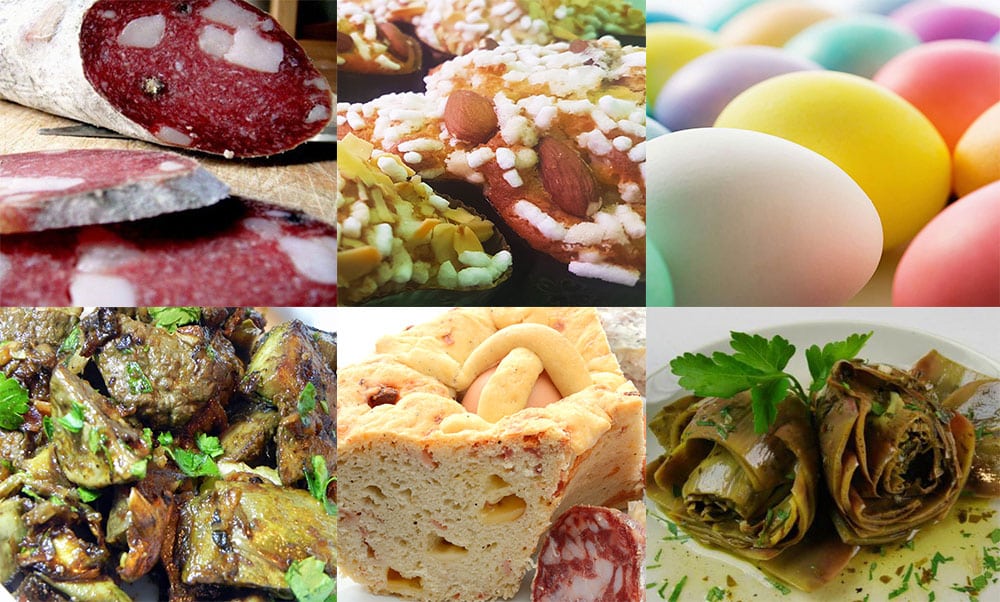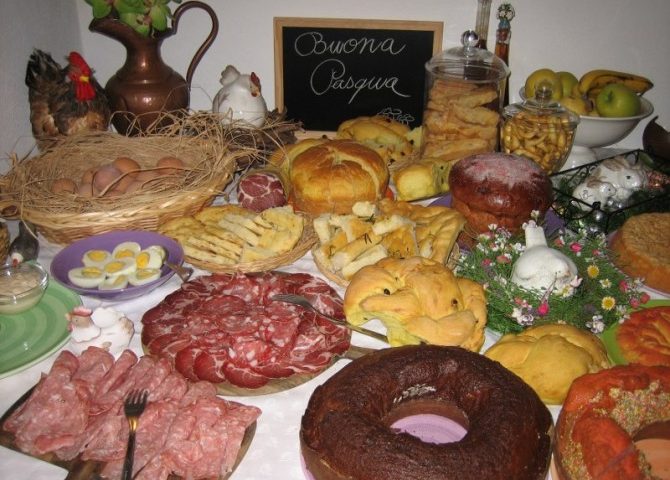One of the best known Roman traditions is the abundant Easter morning breakfast
Easter day is the one linked to the Christian solemnity of the resurrection of Jesus, but every year, starting from the Thursday before Easter, important religious rites and events are celebrated which in Rome are very important for the presence of the Pope who annually leaves from Thursday of Holy Week (Holy Thursday) performs various gestures and rites, which involve the attention of the whole world from the spectacular procession of the Via Crucis on Good Friday with torches and candles, up to the Angelus.

One of these rites (in this case much more material) related to Easter in the Eternal City is the Roman Easter breakfast, an unmissable event for the Romans who come together in the family and bring many dishes to the table, both sweet and savory. A tradition that requires strong and trained stomachs. Find out where this particular custom comes from, why you eat all this stuff and what are the typical dishes of the renowned Roman Easter morning breakfast.

What dishes are made of the Roman Easter breakfast? Cured meats, especially corallina, Easter pizza, savory pies, eggs, Jewish artichokes, the traditional coratella with artichokes, chocolate and many other dishes for a truly rich, festive and abundant meal.
The artichoke, of clear Jewish origin, is one of the symbols of the Roman Easter table, and is cooked either as a side dish to the Giudia or even together with the offal.
The origin of this spectacular tradition is to be found in the long Lenten fast that the faithful perform and which intensifies before Easter night; when the feast of the resurrection of Jesus Christ is celebrated, the great abundance returns to the table too.

Breakfast is prepared with great care and eaten with the family, often in an enlarged version (not in this period of the Coronavirus pandemic, of course), on Easter morning. It is not a quick snack but a real meal on a table set and decorated with a theme.
After the Lenten fast it is permissible to eat everything: the classic Easter pizza (or beaten pizza) is served both in the classic sweet version, and then resembles a margherita cake, and in the cheese version.
The latter, an original combination of sweet and savory, is used to accompany slices of coral-type salami, a coarse-grained salami absolutely inevitable on Easter tables in Rome. Do not miss the hard-boiled eggs, sometimes decorated by hand, or the omelette with artichokes or wild asparagus.
Many also prepare different types of savory pies often stuffed with vegetables, Roman chicory, or the typical Easter cake. True traditionalists never miss the typical offal with artichokes (lamb entrails cooked in a pan).
Sometimes broth is prepared, very often lamb (or lamb, in Rome), which is usually cooked in the oven with potatoes or on the grill, and in this case it is called scottadito lamb because it must be eaten hot but the fingers. Or fried: the lamb ribs are separated one by one, breaded and then fried.
And then also the elements of the morning breakfast: coffee, milk, Easter cakes of various kinds such as doves and of course chocolate eggs.
Follow our Blog
